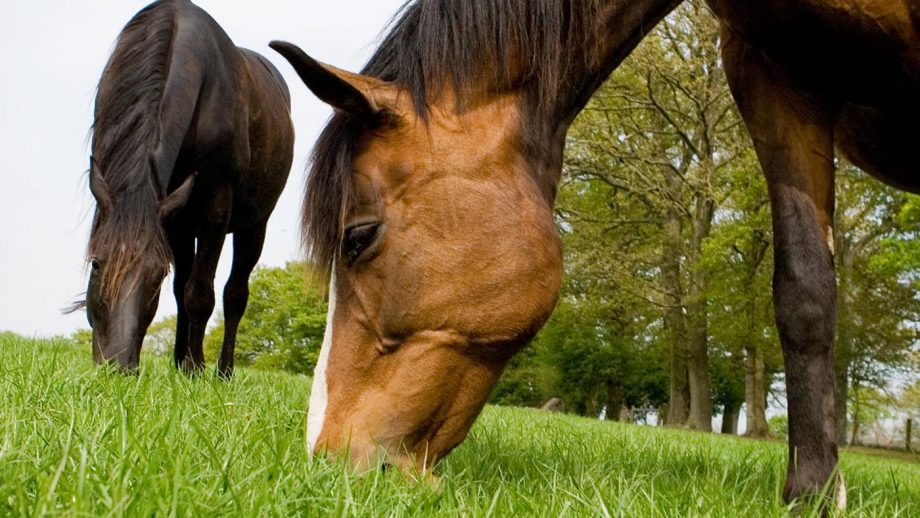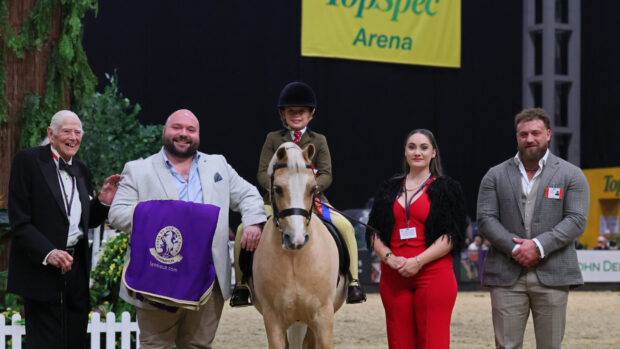Want to buy a top-class Dartmoor pony to compete, or one simply to become your family’s best friend? Then these top tips from a breeder will help guide you every step of the way.
What is a Dartmoor pony?
The Dartmoor pony is the British native breed that originated from the county of Devon. The ponies have been recorded living on the moors of Dartmoor since the middle ages, meaning they have developed to be hardy and resilient.
The Dartmoor Pony Society (DPS) represents the pedigree Dartmoor pony and they are known as “the guardian’s of the breed”. In addition to registered Dartmoor ponies, there are many ponies living out on Dartmoor of all sizes and colours, most of unknown breeding. These are known as Dartmoor Hill Ponies.
When it comes to pure-bred Dartmoor ponies, the DPS provides the following breed standard:
Colour: A certain amount of white is acceptable (for example a small sock to fetlock, small star or snip), but excessive white markings (such as a white blaze, stripe and any stockings) are to be discouraged.
Neck and head: The head is small and bloodlike, reasonably short from eye to muzzle and without much tapering to the nose. The ears are small and alert and the eyes fairly large giving the pony a kindly interested expression. It should be well set on a good neck of medium length. The throat and jaws should be fine and showing no signs of coarseness or throatiness. Stallions to have a moderate crest.
Shoulders: Good shoulders are most important. They should be well laid back and sloping, but not too fine at the withers.
Body: Of medium length and strong, well ribbed up with a good depth of girth giving plenty of heart room.
Loin and hindquarters: Strong and well covered with muscle. The hind quarters should be of medium length and neither level nor steeply sloping. The tail is well set up.
Limbs: The forelegs should not be tied in at the knee. The forearm should be muscular and relatively long and the knee fairly large and flat at the front. The cannons should be short with ample good, flat bone. The pasterns should be sloping but not too long. The feet should be hard and well shaped. The hocks should be well let down with plenty of length from hip to hock, clean cut and with plenty of bone below the hock. They should have a strong second thigh. They should not be sickled or cow-hocked.
Movement: Low and straight coming from the shoulder with good hock action but without exaggeration.
Dartmoors are not to exceed 12.2hh (127cm).
They can be bay, brown, black, grey, chestnut, or roan in colour. Piebalds, skewbalds and spotted are not allowed.
The DPS also states that: “The Dartmoor is a very good looking riding pony, sturdily built yet with quality, like a scaled down middleweight hunter. The mane and tail should be full and flowing. The general impression given by a Dartmoor is of a well made, quality pony with ample bone which stands over plenty of ground.”
The Dartmoor Pony Society has a grading system for stallions. Stallions become Premium or Super Premium through the progeny they have sired winning at the society’s star shows.
An increasing amount of part-breds are seen on the circuit and in other disciplines, too, with the Dartmoor adding hardiness, bone, substance and pony characteristics to other breeds.
What should I look for in an Dartmoor pony?
Joyce and Jacky Newbery run the Newoak Dartmoor Stud in Devon. They have bred ponies that have won all over the country, including at Horse of the Year Show (HOYS), the Royal International (RIHS) and the Dartmoor pony breed show.
“Conformation is conformation, irrespective of what type or breed of pony you are looking at,” Jacky begins. “A Dartmoor should be a scaled down middleweight hunter in many ways with good bone, nice short cannons, good feet and a pretty pony head with small ears. Bone is exceptionally important; I would not buy a pony with weak bone.
“Ultimately, we’re looking for a quality pony for the riddens; whether we’re buying a pony or aiming to breed one, it needs to have a job. They must possess a good shoulder where the saddle can clearly sit. Movement wise, a pony should cover the ground and not daisy-cut like a show pony, while also following through with the hocks.
“Also, we’re looking for a pony that has a good temperament.”
What can I do with a Dartmoor pony?
Dartmoor ponies are seen in multiple disciplines and they are very popular show animals, being ridden by small adults and children in the show ring.
They compete and are successful in open, junior, lead rein and first ridden mountain and moorland (M&M) classes and they also feature in working hunter pony classes.
The Dartmoor has its own final at HOYS and otherwise they contend small breeds classes. Dartmoors make good family ponies as they can be shown but can also stand up to other activities such as Pony Club, hunting and jumping.
They are fairly low maintenance to keep, requiring little intervention to live happy and healthy lives, however as with most smaller ponies, buyers should be aware that laminitis can be a risk.
Where should I buy a Dartmoor pony from?
“A lot of buyers come to us as breeders looking for something specific,” says Jacky. “We have a demand for Dartmoors of all ages, from foals to fully grown ponies ready to start their ridden careers.
“While the pages of Horse & Hound and online sales sites can be useful, a lot of good ponies are sold via word of mouth.”
How much should I expect to pay for a Dartmoor?
“A reputable stud with a good track record can expect higher prices for their stock,” says Jacky. “They could sell a foal from around £800 up to £1500. A good pony aged four years old or over and ready to back could be several thousands.
“Ridden prices can vary; I’ve seen ponies go for £5,000, and others go for £20,000 depending on their records and results. Dartmoors can be for anyone, they can easily carry a small adult but they make fantastic children’s ponies if they’ve been educated properly and have been given the best start in life. This is the reason that we don’t usually sell ponies until they are three or four years old.”
What about Dartmoor Hill Ponies?
Dartmoor Hill Ponies or Heritage Ponies cannot be shown in affiliated native ridden or in-hand classes, but this does not mean they don’t have jobs, as Jacky explains: “They are still very versatile ponies, just as much as their pure-bred counterparts. We have several Heritage Dartmoor Ponies in our riding school and they are athletic and intelligent animals who can do many things.”
I’ve agreed to buy a Dartmoor, now what?
It is time to consider a pre-purchase vetting, something that is strongly recommended. If the pony is for a child, perhaps asking for a trial period would be sensible, but not all sellers will agree to this.
It’s important to let the vet know prior to the vetting what you intend to use the pony for so they can assess it accordingly. If you tell the vet that you want the pony for the show ring, they should hopefully inform you of any blemishes or conformational faults which could impact its future career, even if they don’t impact its soundness or performance.
“We are always open to vettings, though we don’t tend to get a lot of people requesting them,” says Jacky. “It’s a personal choice and depends on how much you are paying for a pony, and if you need to obtain one for insurance.”
- To stay up to date with all the breaking news from major shows throughout the season, subscribe to the Horse & Hound website
You may also be interested in…

How much does a horse really cost a month? H&H does the maths…

On the hunt for a Welsh section A pony? Then you need to read this first…

Looking to buy a show hunter pony? Where to search and exactly what to look for

How much does it cost to breed a horse?

Subscribe to Horse & Hound magazine today – and enjoy unlimited website access all year round




